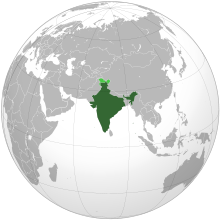Seoul Nuclear Security Summit 2012: India’s Position – Analysis
By IPCS
By Abhijit Iyer-Mitra
India’s statement at 2012 Seoul Nuclear Security Summit (NSS) is a text book example of rhetoric and evasion. Split into eight separate segments covering cooperation, legal obligations and processes four major themes pervade the entire text; nuclear terrorism, India’s non-proliferation credentials, a rhetorical commitment to international cooperation on safety and security issues, and finally a focus on training and capacity-building.
The clearest Indian imperative in India’s progress report is the need to contain nuclear terrorism. This manifests itself in many forms and over six of the eight subdivisions of the document. There is a cogent reason for this given that India is the most likely first target of nuclear terrorism either as a subset of independent malignant actors given India’s porous borders or by being targeted intentionally by a sub-state proxy. This seems to weigh heavily on the Indian mind since most references are to illegal proliferation. The obvious reference here is to Pakistan, its history of proliferation and the close nexus between the military and the quasi-state nature of several high capacity terrorist organizations operating out of there. The first tangible India provides is the passage of several related laws. While these seldom translate into concrete action on the ground, at a legal level at least India seems to be delivering tangibles in pursuit of its commitment to stem outwards proliferation.

Another underlying theme that emerged was India’s need to explain its integration within the normative nuclear regime without actually integrating with all its mechanisms and institutions. As a result the stress placed in India’s national report on the passage of laws and tightening of regulations governing the export of nuclear materials and technology contrasted with the lack of movement on ‘proliferation’, ‘nuclear terrorism’ and ‘smuggling’. This was primarily to enable inward imports (which from a certain point of view counted as inwards proliferation) of materials and technology while reinforcing the walls against geopolitical opponents acquiring the same capability – in essence therefore it was reinforcing the creation of India’s unique niche within the global nuclear order as being within the fold while staying outside the NPT. This was buttressed by the move towards an independent nuclear regulatory authority as is the norm. A case was evidently being built to link the separation of India’s civil and military nuclear programmes (and hence greater normative adherence) to increased cooperation with the nuclear haves.
Disappointingly, much of the document seems rich in rhetoric not backed up by concrete steps. For example much activity (such as participating in or hosting meetings) is confused with achievement. This seems consistent with India’s institutional record of keeping internal safety and security measures away from international scrutiny. This seems a ploy to keep the avenues of horizontal proliferation of knowledge open from the civil to military programmes. Given the ‘credible minimum’ approach of India’s nuclear doctrine, such secrecy is critical to credibility, and while making statements supporting peer review in generalities, India seems unlikely to operationalize any peer review mechanisms in the near future.
The only deliverable that India offered and operationalized was in the field of training and capacity-building. To this end India has conducted several training seminars on nuclear security cooperation. The Global Centre for Nuclear Energy Partnership (GCNEP) seems to be in the advanced stages of construction with India awaiting the conclusion of practical arrangements and protocols with the IAEA. Additionally it seems India has also shared radiological medical equipment with Vietnam, Namibia and Sri Lanka – specifically linked to cobalt. India’s single point focus on proliferation-linked nuclear terrorism seems rather incredulous here since the medical cobalt 60 incident in Delhi in 2011 pointed to avenues of a dirty bomb precisely due to a lack of serious introspection on inadequate material management systems in place.
The most curious aspect of the NSS was the Prime Minister’s speech while placing the report on record. This rehashed the long discarded and irrelevant Rajiv Gandhi Action Plan and linked universal disarmament to nuclear safety. This is perplexing given India’s main thrust was nuclear terrorism which removes the use of such weapons from the ambit of state-to-state actors and places them in the hands of quasi-state entities who do not play by such rules. The report conspicuously avoids making such a contrived link. Such a factual error in the Prime Minister’s speech which would have been vetted at the highest levels of the nuclear bureaucracy can mean one of two things. Either the fallacy of the linkage is not understood by India or the more probable alternative – that India’s rhetoric deliberately assumes unrealistic maximalist positions to mask the fact that its policies have always subjugated nuclear safety and security to realpolitik concerns.
Abhijit Iyer-Mitra
Research Officer, IPCS
email: [email protected]
